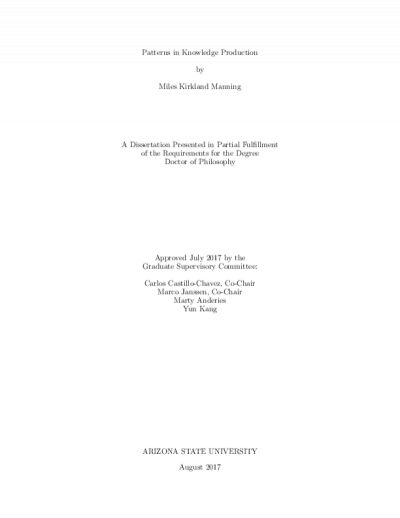Is Resilience Achieved in Colorado River Recovery Programs? A Complex Social-Ecological Systems Approach

Description
Globally, rivers are being heavily dammed and over-utilized to the point where water shortages are starting to occur. This problem is magnified in arid and semi-arid regions where climate change, growing populations, intensive agriculture and urbanization have created tremendous pressures on existing river systems. Regulatory incentives have been enacted in recent decades that have spurred river restoration programs in the United States. But what kind of governance does river restoration require that is different from allocative institutional set-ups? Are these recovery programs succeeding in restoring ecological health and resilience of the rivers? Do the programs contribute to social-ecological resilience of the river systems more broadly? This study aims to tackle these key questions for two Colorado River sub-basin recovery programs (one in the Upper Basin and one in the Lower Basin) through utilization of different frameworks and methodologies for each. Organizational resilience to institutional and biophysical disturbances varies, with the Upper Basin program being more resilient than the Lower Basin program. Ecological resilience as measured by beta diversity (for the Upper Basin) was a factor of the level of hydrological and technological interventions rather than an occurrence of the natural flow regime. This points to the fact that in a highly-dampened and managed system like the Colorado River, the dampened flow regime alone is not a significant factor in maintaining community diversity and ecological health. A broad-scale social-ecological analysis supports the finding that the natural feedback between social and ecological elements is broken and recovery efforts are more an attempt at resuscitating the river system to maintain a semblance of historic levels of fish populations and aquatic processes. Adaptive management pathways for the future need to address and build pathways to transformability into recovery planning to achieve resilience for the river system.
Date Created
The date the item was original created (prior to any relationship with the ASU Digital Repositories.)
2021
Agent
- Author (aut): Srinivasan, Jaishri
- Thesis advisor (ths): Schoon, Michael L
- Thesis advisor (ths): Sabo, John L
- Committee member: White, Dave D
- Committee member: Janssen, Marcus A
- Publisher (pbl): Arizona State University






